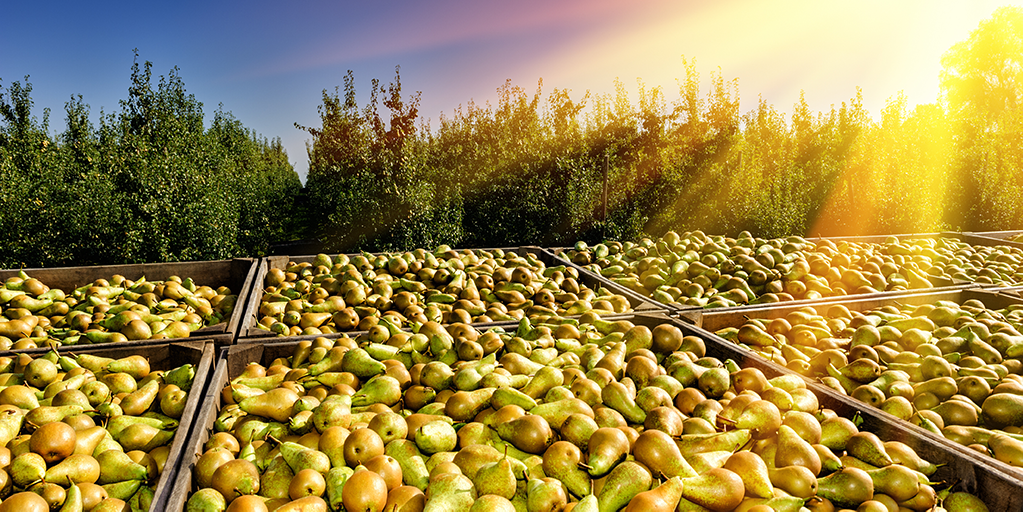
The Race Against Rot: Preventing Food Loss in the Tender Fruit Market
Food loss and waste is a hot-button topic in both the food industry and among consumers. As food costs continue to rise, both growers and retailers are under pressure to reduce food waste wherever possible.
By the end of 2015, the Ontario tender fruit market was worth close to 56 million dollars. That is clearly no small amount of cash. It begs the question, however: How much higher could that number have been if a significant portion of waste was avoided?
Currently, it is difficult to confirm just how much product and therefore revenue was lost due to wasted product. Understanding the challenges faced by the tender fruit industry, and addressing the issue of waste - is a priority objective of the development team at Croptracker.
From the moment fruit is picked, it must travel several kilometers at times before it is even packed for shipping. During this time, the fruit incurs minute amounts of damage each and every time it’s moved or manipulated. It goes without saying that the journey of tender fruit is a perilous one - with each bump or bruise translating into either a reduction in value, or fodder for the compost heap.
Croptracker’s cloud-based system uses Geographic Information System (GIS) and Radio Frequency Identification (RFID) technology to streamline the entire logistical process from orchard to market. This not only increases the speed at which tender fruit can be delivered to the consumer, but more importantly - it improves accuracy. Many tender fruit operations are large scale, and continue to grow alongside rising consumer demand.
Croptracker removes the guesswork involved with manual methods of tracking produce. In the past, this vital information was typically recorded on paper or using antiquated barcode systems. Today, these now obsolete systems come with high maintenance and operating costs.
More often than not, the parts used in older systems are no longer manufactured and crucial data is stored on a physical server which is at significant risk if it were to break down. Croptracker uses a cloud based structure for information storage which is far more secure.
“The cloud networking approach is really powerful. You can track, trace and share specific information instantly, across vast geographical regions, and amongst a group of growers working together, to fill a massive order for a retailer.” - Matthew Deir, Croptracker CEO
Currently, when distributors determine where to send a shipment of produce, it is usually based on demand and what they perceive as the most informed choice. There are several factors that must be considered when doing intake or harvest. Naturally, things can get hectic.
Croptracker takes all the available information into consideration, helping growers locate and select the best fit for the raw product on hand. By knowing exactly what is in inventory at any given moment, and exactly where it is, the product is moved around less and suffers far less damage. This results in a higher and more consistent level of quality for the retailer and consumer.
This level of enhanced logistical knowledge begins to clearly illustrate how large amounts of waste can be reduced, or completely avoided in the first place. By preventing the opportunity for lost or wasted product, the fringe benefits can be felt throughout the supply-chain.
Using the cloud, warehouses are updated with harvest information the second it is entered into Croptracker, which helps facilitate storage decisions and shipping priority. These components work together, ensuring produce is allocated, processed and shipped to the right locations, saving time, product and money.
Backed by real-time tracking data, Croptracker’s automated storage management component can, for example, tell a forklift operator where the product is; it’s age and where to place it. This component reduces the amount of chaos during harvest time and the associated losses with misplaced or lost produce.
“To be able to pick up your smartphone and know where a certain bin is, in storage, and how long it has been there, but also what is in its way – and must be moved in order to get it out - is not only paramount to reducing food waste but also improving your bottom line.” - Matthew Deir, Croptracker CEO
This level of traceability lets producers know the exact orchard that the produce came from – which is becoming increasingly important in the marketplace. Properly labeling produce at the point of origin and tracking the fruit throughout the rest of its journey is made simple with Croptracker.

